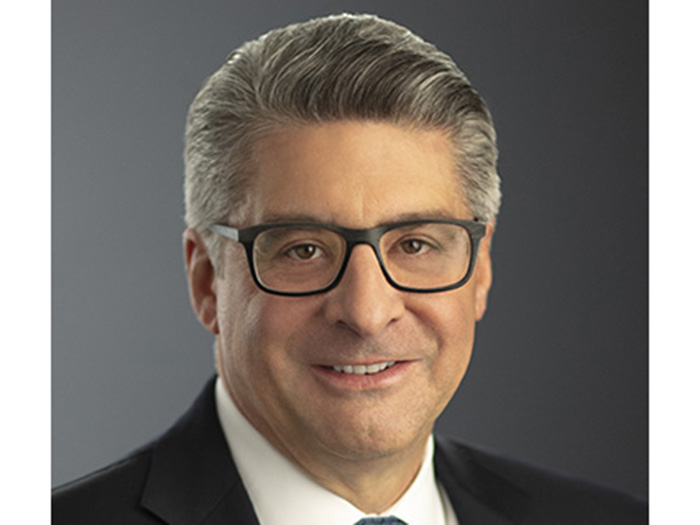Cyber Security
Securing Consumer Transactions

Major data breaches among big box retailers, large banks and other consumer outlets continue to make news. As a result, more secure consumer payment methods are popping up.
Yet, the critical question remains: Will emerging technologies — from “chip-and-PIN” credit cards to Apple Pay, Google Wallet and other products — stem the data risk tide? And, will there be a front runner among the group?
Will there be a single payment system that can give both retailers and their customers a sense of security that is currently nonexistent?
It’s much too early to tell, experts said. The main challenge now may be sorting through the various technological options — in addition to the potential cost and difficulty of implementing a new standard system.
“There is no security salvation or fraud magic bullet, but many of the new technologies offer a lot of promise.” — Aaron Press, director of e-commerce and risk solutions at LexisNexis Risk Solutions
For example, some large retailers such as Wal-Mart, Rite Aid and CVS announced they would not accept Apple Pay, which uses the iPhone and major credit cards as its “touchless” payment delivery system. Instead, those large retailers and others are planning to use an alternative e-payment technology, called CurrentC, which bypasses major credit cards completely.
The retailers favor that system because it eliminates the transaction fees charged by credit card companies to retailers.
According to Aaron Press, director of e-commerce and risk solutions at LexisNexis Risk Solutions in Dallas, each of the various mobile wallet systems has its own advantages.
VIDEO: A report on CBS This Morning notes that the U.S. lags far behind the rest of the world in adoption of chip-and-PIN cards. The main reason? The $8 billion cost to replace the point-of-sale hardware.
One key benefit of systems such as Apple Pay and CurrentC, he said, is that they do not pass actual card data to the merchant, so there is no account information either in storage or in transit that can be compromised.
“If the wallet systems are secure, then consumers benefit from not sharing their payment credentials with merchants,” he said.
“This means that even in the event of a breach, the consumer will not have to worry about their information being stolen and dealing with the hassle of disputing fraudulent charges or receiving new account numbers.”
Press noted that it is not yet clear whether Apple Pay or CurrentC will be vulnerable to fraudulent use.
E-wallet providers must ensure that the credentials being provisioned and used actually belong to the consumer attempting to use them, and that the applications, processes and infrastructure are secure, he said.
The biometrics used with the Apple Pay process are helpful, but not a panacea.
Biometric Advances
David Katz, leader of the privacy and information security practice group in the Atlanta office of law firm Nelson Mullins, said Apple Pay’s biometric Touch ID technology makes it “difficult for a thief or imposter to use an iPhone to complete transactions fraudulently.”
“Consumers whose phones are stolen or misplaced can easily use the ‘Find my iPhone’ feature to suspend all payments,” he said.
However, he added, with 800 million credit cards on file — not to mention the new wearable fitness trackers that contain large amounts of health data — Apple may have succeeded in making itself a prime target.
“Apple Pay does represent a security improvement over today’s magnetic stripe credit card architecture since the former requires stealing a victim’s phone and successfully duplicating a fingerprint to commit fraudulent transactions,” said Paco Hope, principal consultant at security consulting firm Cigital, in Dulles, Va.
Apple Pay also includes architecture (such as proxy numbers instead of account numbers) that contributes additional security, he said.
Russ Spitler, vice president of product management at Alien Vault, a security provider in San Mateo, Calif., called Apple Pay a “major move” for the payment industry.
While the underlying technology is not new, Apple has the market share and consumer buy-in to make it popular, he said. Shifts in payment technology are driven by consumer demand, not retailer preference.
“In the past, Apple has proven it can manage private data very responsibly — they take encryption seriously and implement it well,” Spitler said.
“They are still prone to attacks against their users such as the recent iCloud issues — but they are working to add more features to help safeguard even in that situation.
“With Apple Pay, I am hopeful we will turn the corner on the horrible status quo of credit cards,” he said.
Structural Challenges
Because the U.S. adopted credit cards faster than they spread across Europe, Spitler said, the infrastructure in the U.S. is mostly antiquated but deeply entrenched, such as the point-of-sale (POS) systems reliant on magnetic stripe technology.
Moving past that to new Europay, MasterCard and Visa (EMV)-based credit cards (also referred to as chip-and-PIN, chip-and-signature, chip-and-choice, or generally as chip technology) will require a major retrofit of a very distributed payment system that’s been in use for a long period of time, he said.
EMV is a global standard for interoperation of integrated circuit cards (IC cards or “chip cards”) and IC card-capable POS terminals and ATMs, for authenticating credit and debit card transactions.
EMV also supports dynamic authentication (numbers change with each transaction), which means a cardholder’s data is more secure on a chip-enabled payment card than on a magnetic stripe card, and is much more difficult to copy or counterfeit.
“Each corner store will have to invest in new technology at great cost to themselves and without any demand from the consumer; that’s a really difficult request to make of a small business,” Spitler said.
“Magnetic stripe technology makes it dirt simple to clone a card once you have the electronic data associated with it,” he added.
However, he said, the use of chip/PIN technology does not guarantee the long-term elimination of risk.
“Even if the world magically adopted chip-and-PIN technology overnight, hackers would simply try to find a new way to turn card data into money,” Spitler said.
Mike VanDenBerg, a managing director in KPMG’s cyber services and information protection practice, said it’s well documented that fraud and loss levels are lower in Europe than in the U.S.
“It’s not perfect there, but it’s better. There were many more barriers to the adoption in the U.S., mainly the high cost and disruption of replacing the aging POS equipment necessary to adopt chip-and-PIN-type solutions,” he said.
VanDenBerg said the ripple effect of the latest round of data breaches started in earnest around 2013, and served as a major wake-up call, not just for retailers but for any business that allowed payment with a magnetic swipe credit card.
Unfortunately, when you factor in budget cycles for new equipment, priorities had already been set in 2013 for the following year. As a result, planning and positioning for 2015 has just begun.
“The first big adjustments on these fundamental problems from a security standpoint are starting to take place right now,” he said. “Plus, they also must be able to connect to Apple Pay and other wireless payment platforms.”
VanDenBerg noted that merchants have to install replacement platforms at all levels, including both hardware and software — a very expensive undertaking. And while there is no mandate to move to EMV-based solutions (no laws or regulations demanding it), merchants and retailers understand that they need to move to the next level when it comes to data security at point of sale. After all, how many more data scandals do we need to see to trigger a broader consumer backlash?
“It’s not an end game, nor a silver bullet, but the new credit card platforms are definitely more secure than the current magnetic stripe cards,” he said.
“If it takes two or three years to move from one technology to another, the old platforms may even get less secure because they will receive less scrutiny in terms of updates, patches, etc.” — Mike VanDenBerg, managing director, KPMG cyber services and information protection practice
From a risk management perspective, he said, retailers will need to turn the “old stuff off” as they roll out the new POS platforms. So while they are sun-setting systems that are no longer needed, the risk still remains as long as they are in operation. In fact, businesses should be very careful prior to the transfer.
“If it takes two or three years to move from one technology to another, the old platforms may even get less secure because they will receive less scrutiny in terms of updates, patches, etc.,” he said. “That can’t be ignored.”
Anyone putting consumer data at risk by accepting credit cards must engage in the risk management and security conversation and bring it to the forefront of the business.
“Ten years ago, security was in the background, outside the building. Five years ago, it was in the lobby and three years ago, it was moving up even more. Today, it finally has a seat at the table,” he said. “I think we will see significant momentum a year or two from now when it comes to credit cards equipped with chip-and-PIN-type solutions.”
Cigital’s Hope said that payment networks are introducing risk management beyond today’s process of simply accepting or denying charges. Contactless payment systems deployed in the UK, for example, usually are dependent upon a variety of limits on total amount, number of transactions and transactions per time period.
“This is what it looks like when modern risk management meets the retail experience: the strength of the security measures in place,” he said. “Retail customer data in the future will be much more carefully protected using similar designs.”
Cyber Coverage
Regardless of what type of payment system is used, all businesses should have cyber insurance, even though many companies still don’t believe they are likely targets, said Collin Hite, who leads the insurance recovery group at Hirschler Fleischer in Richmond, Va.
The first party aspects of such coverage can be critical to a business since the insurance pays for forensic investigation and re-securing the network, in the event of a data breach, he said.
“This is typically the largest cost — not the actual loss of information of the consumers,” he said.
“While we know the Fortune 500 to 1,000 are considering specific cyber coverage, middle-market businesses need to understand that they are as vulnerable as the ‘big boys,’ ” he said.
Craig Young, a mobile security researcher for Tripwire, in Portland, Ore., said the best risk management strategy is to move to the next technology as quickly as possible.
“The ancient swipe and sign technology that dominates American retail is long overdue for a funeral,” he said. “For years, credit cards have been low-hanging fruit for thieves with a variety of techniques to steal card data, reproduce cards and start spending.”
LexisNexis’ Press added that it’s way too early to declare a front runner in mobile payments, and that magnetic stripe cards will be around for several more years.
“There is no security salvation or fraud magic bullet, but many of the new technologies offer a lot of promise,” Press said. “EMV will drastically improve POS security and reduce counterfeit fraud. Biometrics is a promising option for identity verification.”
But, he warned, new technologies open the window to new problems.
“Companies need to evaluate the risks and benefits of adding any new commerce technology or channel to their environment,” Press said.












